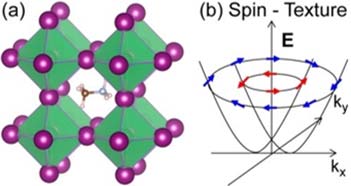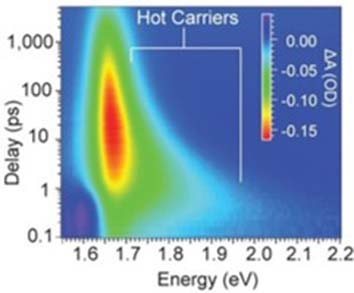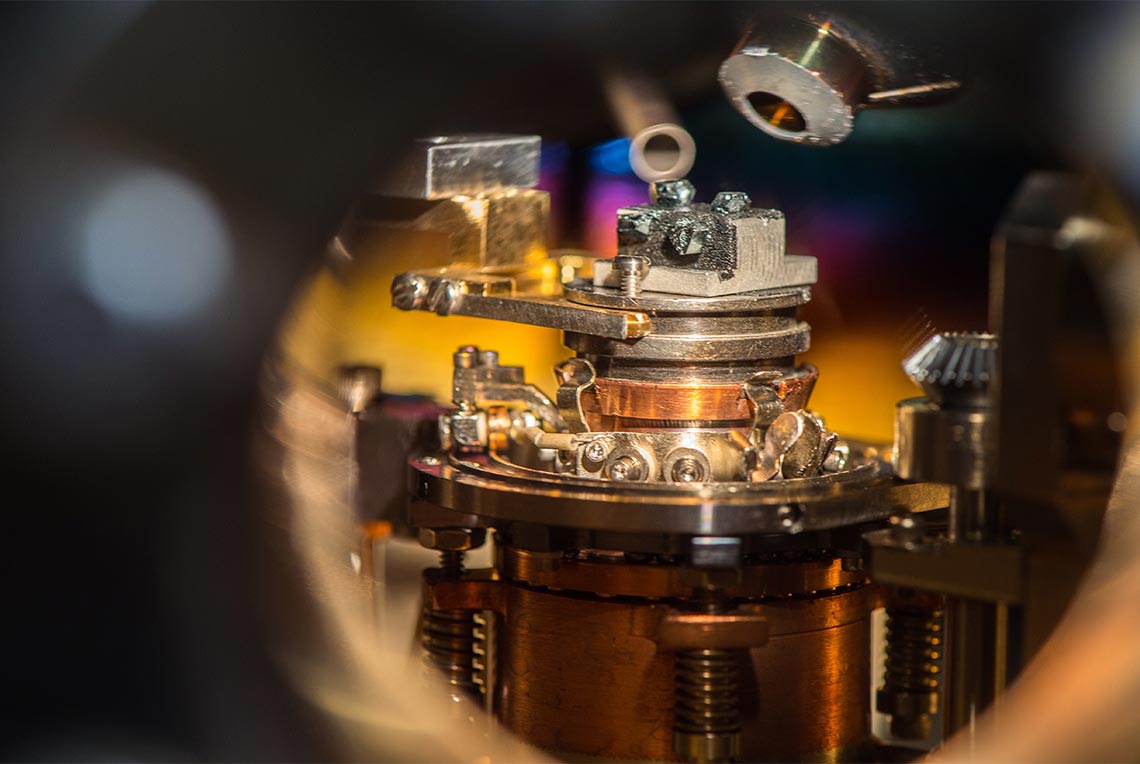Key Scientific Concepts
CHOISE's research embraces three key scientific concepts: three-dimensional hybrid organic-inorganic semiconductor (HOIS) structure, "softness," and Rashba/Dresselhaus splitting.
These concepts accelerate the discovery, understanding, and exploitation of emergent phenomena associated with HOIS systems.
Three-Dimensional HOIS Structure
The prototypical HOIS has a perovskite structure with ABX3 stoichiometry—where A is the organic cation, such as methyl ammonium (CH3NH3+); B is the metal cation, such as Pb; and X is the halide anion. But many opportunities exist with HOIS in non-perovskite structures or with the use of non-typical ABX species. This is a major focus of this Energy Frontier Research Center.
Softness
"Softness" corresponds to dynamical disorder within a lattice whereby ions undergo large and strongly coupled motion (vibration) about their average lattice positions. The soft nature is a distinguishing property that sets HOIS apart from conventional semiconductors, such as silicon (Si) and gallium arsenide (GaAs). In three-dimensional HOIS, the soft nature arises from weak noncovalent bonding—due to large ion size and the confluence of ionic bonding and anti-bonding coupling between lone pair s orbitals of the B cation and the halide's p orbitals. The weak bonds are relatively easy to tilt, vibrate, and break.
This softness significantly influences the structural, electronic, optical, and defect properties, which leads to emergent properties that include: dynamic behavior, ferroelasticity, ferroelectricity, electrostriction, photostriction, long-lived hot carriers, large polarons, broadband light emission, low recombination rate, and the challenge to extrinsically n- or p-type dope HOIS.
Physical characteristics include: small phonon energies, Young's moduli, bonding strengths, and ion-migration activation energies, as well as modified point-defect density and structural stability.
Rashba/Dresselhaus Splitting
Rashba/Dresselhaus splitting occurs in the presence of spin-orbit coupling and the breaking of inversion symmetry. The Dresselhaus effect is similar to Rashba, but is usually associated with strain-induced asymmetry. Both Rashba and Dresselhaus effects lock the spin character to the linear momentum, thus creating a unique spin texture at the band edges.

(a) ABX3. A site is the organic component, B site is the center of the octahedra, X site are the purple spheres (b) Spin texture at band edges due to Rashba effect.

A hot phonon bottleneck dramatically slows carrier cooling.









